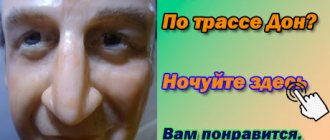In general, imbecility is initially one of the degrees of mental retardation (in relation to mental retardation), in which intellectual impairment is very pronounced. The degree of organic damage to the central nervous system (brain) is quite high, the symptoms are obvious. Children with severe intellectual disabilities are childhood disabilities. Cognitive disorders are (primarily) visible to the naked eye.
There was a certain classification of mental retardation (ICD 9), in which there were only three types of mental retardation:
- Moronism
- Imbecility
- Idiocy
This classification continues to be used by many specialists, but there is a more modern classification (ICD 10 - International Classification of Diseases, 10th revision), it includes 4 degrees of CL depending on the severity of damage to the central nervous system:
- Lightweight
- Moderate
- Heavy
- Deep
In this article, mental retardation is considered only in relation to mental retardation - a group of pathological conditions characterized by organic damage to the brain and general underdevelopment of the entire mental sphere, primarily voluntary cognitive activity, which arose either in the prenatal period, or in connection with complications during childbirth, or in early childhood, in the first three years. ID is not a disease, but only one of the characteristics of various diseases in which intellectual disability is observed.
What is imbecility?
Conventionally, imbecility can be attributed to a greater extent to a severe degree of UI. Moderate mental retardation is a borderline value between debility (mild degree) and imbecility. With a moderate degree of ID, children cannot be classified as children with a mild degree of ID, since the nature of the disorder is more pronounced, but at the same time it may not be as deeply pathological as with severe ID. But at school they are often taught in the same class and in the same type of program. And both groups of children can be considered children with severe intellectual disabilities. And children from both groups can be compared in many respects with children who would previously have been considered imbeciles. They are characterized by a comprehensive disorder of mental and physical development.
And at the same time, this category of children is characterized by strong uneven development of higher mental functions and unclear periodization of development in accordance with age. For a better understanding, we will consider separately children with moderate and severe mental retardation. In fact, all this is oligophrenia in the stage of imbecility.
Diagnostic criteria
According to DSM-5 (the fifth edition of the Diagnostic and Statistical Manual of Mental Disorders), intellectual disability is a neurodevelopmental disorder, characterized and defined by the following symptoms:
- Deficits in intellectual functioning. Difficulties with abstract thinking, reasoning, decision making, and learning. All this must be confirmed by appropriate tests.
- Deficit of adaptive behavior. Inconsistency with accepted cultural and social standards, inability to live independently, reduced social responsibility, difficulties with communication. That is, the individual cannot communicate and serve himself and needs care wherever he is.
- A person finds it difficult to perform tasks that require memory, attention, speech, writing, reading, mathematical reasoning, and is unable to gain practical skills.
- Problems in the social sphere. Does not have socialization skills - communication with people, cannot make friends and maintain relationships. Doesn't understand his feelings and thoughts.
- Problems in the practical field. Poor ability to learn skills, lack of control over one’s own behavior, inability to take care of oneself, irresponsibility, etc.
Other signs
Together with the mentioned criteria, the presence of any stage of CP can be determined by the following criteria.
In the primary period of development, a healthy child masters simple skills, which, as they grow older, are well mastered and move on to more complex ones. Adaptive and intellectual problems become noticeable as the child develops. When they appear depends on the type, cause and degree of mental retardation.
The stages of development (motor skills, speech, socialization) of children with intellectual disabilities are the same as those of healthy people, but they progress much more slowly, that is, they reach a certain level much later. With a mild form of mental retardation, the lag behind peers becomes noticeable only at the beginning of school (learning difficulties), and with a severe form - in the first years of life.
As a rule, if intellectual disability is inherited (by genes), it affects the person’s appearance.
Oligophrenics are more likely to have physical, neurological and other health problems. For such individuals, sleep disturbances, anxiety disorders, and schizophrenia are also common. Diabetes, obesity, sexually transmitted diseases, and epilepsy are common.
People with mild to moderate intellectual disabilities speak much less well than their younger peers. The higher the level of disorder, the worse the speech.
Behavioral disorders characteristic of oligophrenics are associated with the discomfort they experience when communicating, the inability to communicate their thoughts to others, and a misunderstanding of their desires and needs. In addition, they suffer from social isolation. This is where manifestations of excitement, anxiety, nervousness, etc. follow.
Children with moderate mental retardation, what are they like?
These children (most of them) by the age of 7 are able to communicate with adults, based on their needs and the surrounding social environment. They can show a keen interest in what is happening, unless, of course, there is an overload of events. That is, they can be included in simple life situations. They are able to listen to explanations, but can rarely act independently. Most often, guidance and organizing help from an adult is needed.
Capable of independent activity to a limited extent. If only some actions have already been repeated many times and demonstrated to adults by example. They are able to give a simple verbal (if they speak) assessment of their activities based on the sample provided to them.
For example, a child is instructed to assemble a pyramid of 3 parts based on their size - from largest to smallest. The child folds a pyramid without taking into account the size. The adult immediately, in front of the child, assembles the same pyramid, but taking into account the size of the parts. And asks if the child put his together correctly. The child usually says “yes” or “no”. But this action may need to be repeated more than once to achieve the desired result from the child.
What developmental disorders are typical for children with moderate mental retardation?
Physical development. Physically, such children develop late. The boundaries of age periods of physical development are blurred and unclear. Violations are visible from early childhood. These children later begin to roll over, hold their head up, sit, stand, and crawl. Coordination of movements is often impaired. They often have an awkward or unsteady gait. May have difficulty walking and running. They are awkward in their movements. Sometimes they cannot jump on one leg or even on two, that is, even such easy actions are inaccessible to them. They may have difficulty going down stairs.
RELATED MATERIALS: Difficulties in learning to write and read with normal development
Level of emotional development. Often emotionally immature. They do not know how to express their emotions verbally (even if the child has speech). But at the same time, they rarely have strong aggressive reactions (unless, of course, there are mental illnesses or disorders that provoke outbursts of aggression). They react positively to praise and affectionate treatment. They may react to criticism either neutrally or become clearly upset. In general, they are able to respond emotionally adequately to the surrounding environment.
Level of formation of higher cognitive functions (HCF) - attention, speech, memory, thinking, imagination. Naturally, there is a strong underdevelopment of all HMFs. Attention is unstable and quickly depleted. To attract attention, more visual material that is interesting to the child is required. Speech is formed late. Children understand speech addressed to them and can carry out actions following simple instructions.
Own speech is often limited to the simplest everyday words. Complex sentences are generally inaccessible to reproduction and understanding. They use simple phrases like “give me the ball.” That is, they often use nouns primarily in the nominative case, and verbs either in the imperative mood or inconsistently with the noun, for example, “let's go street.” Concepts that should be expressed by nouns are often replaced with verbs, for example, bed - to sleep, street - to walk.
Memory capacity is small. Mechanical predominates. They can retell a simple text (3-4 sentences), but without understanding the meaning. Thinking, naturally, is significantly below the age norm. The underdevelopment of the intellectual sphere is clearly expressed. Colors may vary partially.
Level of development of everyday skills. Such children often experience serious difficulties even in mastering the simplest actions - washing, brushing their teeth, combing their hair. They can dress themselves. But more often with the help of organizing and guiding assistance.
Children with severe mental retardation. a brief description of
Features of physical development:
- These are children with obvious signs of imbecility. Their development occurs with a serious delay. With even more serious and total than in children with a moderate degree of MR. They walk poorly and have serious difficulty running. They can't even jump on two legs. Their coordination of movements suffers greatly. Coordination is seriously impaired.
- At a younger age, they cannot maintain the pose given according to the instructions even for 3 seconds. The older ones can't even stand 10. They're clumsy. Slow. Seemingly simple motor actions present serious difficulties for them. For example, to step over an obstacle literally 30 cm high. And sometimes they are even afraid to overcome a street curb 15 cm high.
- Severe motor impairments are observed. Such children are either extremely slow in their movements, or their movements are fast, but aimless, poorly controlled, and unnecessary. Consistency and coordination of complex movements is impossible (turns, counting bends, jumping).
- Very obvious deviations in such children are observed in the development of analyzers (sense organs). Moreover, despite the fact that if there are no pathologies in the development of hearing, vision, smell, touch, or taste sensitivity, then such children still do not know how to fully use the capabilities of their analyzing system.
Features of the development of the mental sphere:
- Obvious imbeciles have extremely reduced intelligence, unstable memory, reduced in volume to 3 units even after five times repetition, short-term. That is, the child is presented with 10 pictures, for example, with images of well-known objects (an umbrella, a sofa, a flower, etc.) for memorization, and then they are removed and asked to reproduce. At least 20 seconds are given to view each picture and clearly pronounce the meaning of the picture. But as a result, the child can name only a maximum of 3 objects.
- Such children are often speechless. If speech is developed, then at a simple, everyday level. Vocabulary is poor. Although, they can be very emotional. Respond adequately to the demands of a teacher or adult. Capable of communicating with them and with each other. They love to be praised. They are little critical in their actions and actions. Speech often exhibits gross tongue-tiedness, meaningless and mechanical repetitions of what was heard.
- Colors are difficult to distinguish. Even the basic ones. They often get confused. Moreover, the more objects they are presented with, even of the same color, the faster they begin to make mistakes. That is, the volume of perceived information must also be strictly dosed and minimized for an adequate assessment of learning abilities.
- Their independent activities are disordered and chaotic. They cannot use the acquired and already seemingly acquired knowledge to perceive new material. They often do not understand the meaning of their actions. Criticality is seriously compromised.
RELATED MATERIALS: Mental retardation - classification, etiology, causes and diagnosis
In profoundly mentally retarded children, self-care skills are poorly developed or not developed at all. Such children cannot choose their own clothes or dress appropriately for the environment. They don’t know how to lace up or zip a jacket. Most often they do not know how to dress themselves. And if they can, they need organizing help (put on a hat, then boots, fasten them, put on a jacket, etc.). Such children are especially prone to imitation. Therefore, they often need to demonstrate generally accepted norms of behavior by example or teach them the necessary skills.
“Characteristics of a student with severe disabilities”
Psychological and pedagogical characteristics
(including an assessment of the student’s development at the time of drawing up the program and determining priority areas for the child’s upbringing and education)
Khakimov Alevdin Asoltanovich born on April 11, 2001, raised in a complete family. He entered school at the age of 17 by decision of the RMPK. Training takes place according to the program OU NODA 6-2 Alternative communication.
The child has TMND and has painful pathological motor disinhibition and learning difficulties. Speech is unintelligible, repeats words and phrases after adults. The addressed speech is understood according to the intellect. Due to health conditions, the child is not able to comply with requirements or instructions. Motor skills are grossly impaired. Alevdin is severely limited in movement, and only forms of non-verbal communication are possible with him. He is unable to take care of his basic needs and requires constant assistance and supervision.
The attitude towards educational activities is indifferent. Low performance. The pace of activity is slow. There is almost no learning dynamics.
Alevdin gradually got used to the teacher’s appearance in the house and to his touch. Applies to tasks passively. Productive contact is difficult. Voluntary attention is at a very low level; a constant change of activity is required. Movements are erratic, manipulative function of the hands is sharply limited. Interest in games and toys is minimal.
Motor sphere – Gross and fine motor skills are grossly impaired. He can move independently only in the room; on the street, movement is only possible with the help of an adult. Cannot hold a pen or pencil independently. When working, “hand in hand” does not allow you to hold your hand.
State of oral and written speech:
- difficult to understand spoken speech;
- there is no speech.
Features of interpersonal interaction:
— High exhaustion and satiation of activity,
— Significant decrease in sustainable performance.
Reading. Doesn't know the letters. Does not show interest when reading books with bright illustrations. He keeps his gaze on them, but not for a long time.
Letter. Fine motor function is severely impaired. Cannot grasp and hold a pen on his own.
Psychological and pedagogical characteristics
(including an assessment of the student’s development at the time of drawing up the program and determining priority areas for the child’s upbringing and education)
Samkova N,__2011___, born in a complete family. Conclusion PMPC - Consequence of inflammatory disease of the brain. Symptomatic epilepsy. Retinal angiopathy. F-72. Complex defect.
The child has TMND and has painful pathological motor disinhibition and learning difficulties. There is no speech. There is no vision. Desires are expressed through crying. Doesn't understand the spoken word. Due to her health conditions, the girl is not able to fulfill the requirements or instructions. Motor skills are grossly impaired. Nadya is completely limited in movement; forms of non-verbal communication are not possible with her. The girl is unable to take care of her basic needs and needs constant help and supervision. The child often experiences severe epileptic seizures that affect mobility.
The attitude towards educational activities is indifferent.
Motor sphere – Gross and fine motor skills are grossly impaired. He cannot move independently, only in a wheelchair. Cannot hold a pen or pencil independently. When working, “hand in hand” does not allow you to hold your hand.
Psychological characteristics:
- low level of emotional-volitional stability;
— the cognitive sphere and educational motivation are not formed.
State of oral and written speech:
- does not understand spoken speech;
- there is no speech.
Training takes place according to the program OU NODA 6-4 Alternative and additional communication.
The reason for the shortcomings in training: lack of understanding of the material.
Psychological and pedagogical characteristics
(including an assessment of the student’s development at the time of drawing up the program and determining priority areas for the child’s upbringing and education)
Mirzemetova S,__2006___, born in a complete family. Conclusion PMPC - Consequence of inflammatory disease of the brain. Symptomatic epilepsy. Retinal angiopathy. F-72. Complex defect.
The child has TMND and has painful pathological motor disinhibition and learning difficulties. There is no speech. The gaze does not focus. Desires are expressed through crying, lip movements similar to the need for feeding. Doesn't understand the spoken word. Due to her health conditions, the girl is not able to fulfill the requirements or instructions. Motor skills are grossly impaired. Sitoria is completely limited in movement; forms of non-verbal communication are not possible with it. The girl is unable to take care of her basic needs and needs constant help and supervision. The child often experiences severe epileptic seizures that affect mobility.
The attitude towards educational activities is indifferent.
Motor sphere – Gross and fine motor skills are grossly impaired. He cannot move independently, he can only lie down. Cannot hold a pen or pencil independently. When working, “hand in hand” does not allow you to hold your hand.
Psychological characteristics:
- low level of emotional-volitional stability;
— the cognitive sphere and educational motivation are not formed.
State of oral and written speech:
- does not understand spoken speech;
- there is no speech.
Training takes place according to the program OU NODA 6-2 Alternative communication.
The reason for the shortcomings in training: lack of understanding of the material.
Should such children be taught at school at all?
In our country, the education of children who have severe or even moderate mental retardation is better organized, of course, in specialized schools. Despite the fact that it is now possible to implement an inclusive form of education, for which our country is not ready (according to many specialists and experts) neither from a moral and ethical point of view, nor from the point of view of organizing such a form of education (insufficient funding, staffing shortages and many other problems), such children are educated to a greater extent in special educational institutions.
An inclusive form of education is the joint education of children with different levels of psychophysical development in one class and in one educational institution. That is, children with a normal level of development and those with special needs can study together, but according to different types of curricula and curricula.
And failure to provide them with early assistance leads to dire consequences. Both for these children and for society as a whole. Because people with severe intellectual disabilities are literally left to the mercy of fate. The family of such a child also suffers. After all, one of the family members has to devote himself entirely to caring for a special baby. And such children “drop out” from life when they do not receive specialized education.
Therefore, the organization of a special educational environment is so important for them. But also L.S. Vygotsky asked the most important question: does it even make sense to spend so much financial and human resources on educating such a child? After all, the further benefit from him looks at first glance very doubtful; it is as if this person cannot be useful to his country. In any case, the difference between him and a normally developed peer in this regard is very significant. But still... Do we have the right to reason like this? Modern pedagogy gives an unambiguous answer - raising such special children is a task that is almost more important than raising ordinary children, without obvious pathological developmental features.
Diagnosis of mental retardation
Diagnosis of mentally retarded children must certainly be comprehensive and comprehensive, carried out more than once. It is necessary to carefully study the child’s medical history (history of individual development), conduct a medical, psychological and pedagogical examination, clarify the nature of the child’s developmental difficulties, and systematize the data obtained in order to identify potential development opportunities. Moreover, the purpose of diagnosis is not only to determine mental retardation as such, but also to formulate the diagnosis as accurately as possible, which should reflect the following criteria:
- Assessment of the level of mental development of the child, primarily in the cognitive sphere. Determining the degree of mental retardation or mental developmental disorder.
- Assessment of the structural components of the defect - assess the level of development of the cognitive sphere, primarily attention, thinking, speech, memory. Moreover, they not only give a comparative (in relation to the norm) characteristic, but also a qualitative one. The level of preservation and level of impairment of the listed higher mental functions and the emotional-volitional sphere are revealed.
- The presence or absence of mental and physical illnesses.
- Degree of social adaptation.
It is impossible to determine the symptoms of mental retardation, because mental retardation is not a disease; it is rather a symptom of a number of diseases that differ in etiology (causes of the disease) and pathogenesis (mechanism of occurrence and development of the disease).
Doctors, psychologists, and teachers should participate in the diagnosis. And, if necessary, other narrow specialists. And there is no specialist who would give one test for mental retardation and immediately make a clearly defined diagnosis.











